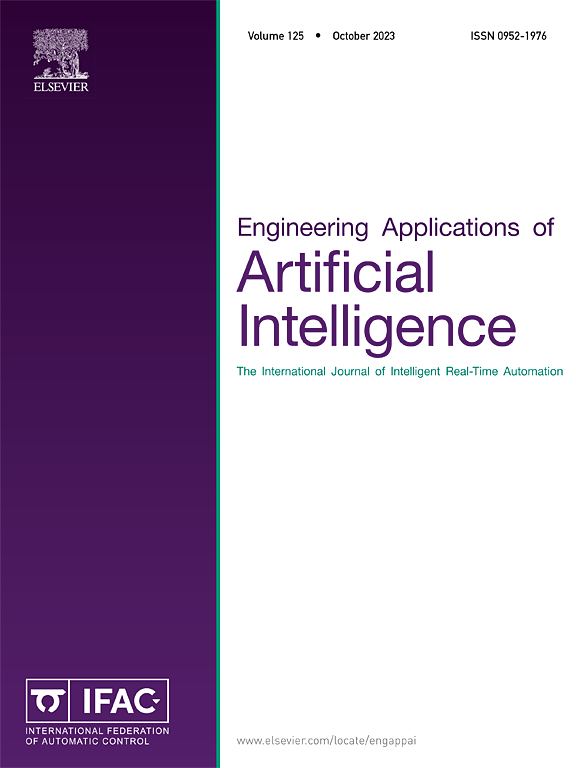IF 7.5
2区 计算机科学
Q1 AUTOMATION & CONTROL SYSTEMS
Engineering Applications of Artificial Intelligence
Pub Date : 2025-02-24
DOI:10.1016/j.engappai.2025.110285
引用次数: 0
摘要
估算锂离子电池的剩余使用寿命(RUL)是一项严峻的挑战,因为这需要预测其在不同运行条件下的未来性能和寿命。解决这一问题对于加强电池维护、提高可靠性和保护依赖锂离子技术的设备至关重要。在本文中,我们提出了一种估算 RUL 的双重方法。首先,自动编码器(AE)从输入中提取关键特征。关键的可测量参数,如充电曲线中的电压、电流和温度,来自电池管理系统,为自动编码器提供可靠的数据。AE 的核心是使用基于空间注意力的传导式长短期记忆 (TLSTM) 模型构建的,该模型由先进的生成式对抗网络 (GAN) 进行训练。TLSTM 模型采用传导式学习,强调测试点附近的样本以完善拟合过程,在性能上超越了传统的 LSTM 模型。在 AE 训练阶段之后,输入的潜在表示被输入到为 RUL 预测而设计的多层感知器 (MLP)。我们使用美国国家航空航天局(NASA)的数据集进行了全面评估。此外,马里兰大学先进生命周期工程中心(CALCE)正在进行实验,以检验迁移学习(TL)对我们模型的影响。TLSTM 模型的表现优于其他深度学习模型,其平均绝对百分比误差(MAPE)介于 0.0053 和 0.0095 之间,令人印象深刻。这凸显了我们的方法在准确预测 RUL 方面的有效性和优越性,为依赖于储能系统的行业提供了巨大的潜在利益。本文章由计算机程序翻译,如有差异,请以英文原文为准。
A dual-method approach using autoencoders and transductive learning for remaining useful life estimation
Estimating the remaining useful life (RUL) of lithium-ion batteries presents a critical challenge, as it necessitates predicting their future performance and lifespan under diverse operational conditions. Addressing this issue is crucial for enhancing battery maintenance, improving reliability, and safeguarding devices that depend on lithium-ion technology. In this article, we propose a dual-method approach for RUL estimation. Firstly, an autoencoder (AE) extracts pivotal features from the input. Key measurable parameters, such as voltage, current, and temperature from charging profiles, are derived from the battery management system, providing robust data for the AE. The core of the AE is constructed using a spatial attention-based transductive long short-term memory (TLSTM) model, which is trained with an advanced generative adversarial network (GAN). The TLSTM model employs transductive learning, emphasizing samples near the test point to refine the fitting process and surpassing conventional LSTM models in performance. Following the AE training phase, the input's latent representation is inputted into a multilayer perceptron (MLP) designed for RUL prediction. We conduct thorough evaluations using National Aeronautics and Space Administration (NASA) datasets. Additionally, experiments from the Center for Advanced Life Cycle Engineering (CALCE) at the University of Maryland are underway to examine the influence of transfer learning (TL) on our model. The TLSTM model performs better than other deep learning models, achieving an impressive mean absolute percentage error (MAPE) ranging between 0.0053 and 0.0095. This highlights the efficacy and superiority of our approach in accurately predicting RUL, offering significant potential benefits for industries reliant on energy storage systems.
求助全文
通过发布文献求助,成功后即可免费获取论文全文。
去求助
来源期刊

Engineering Applications of Artificial Intelligence
工程技术-工程:电子与电气
CiteScore
9.60
自引率
10.00%
发文量
505
审稿时长
68 days
期刊介绍:
Artificial Intelligence (AI) is pivotal in driving the fourth industrial revolution, witnessing remarkable advancements across various machine learning methodologies. AI techniques have become indispensable tools for practicing engineers, enabling them to tackle previously insurmountable challenges. Engineering Applications of Artificial Intelligence serves as a global platform for the swift dissemination of research elucidating the practical application of AI methods across all engineering disciplines. Submitted papers are expected to present novel aspects of AI utilized in real-world engineering applications, validated using publicly available datasets to ensure the replicability of research outcomes. Join us in exploring the transformative potential of AI in engineering.
 求助内容:
求助内容: 应助结果提醒方式:
应助结果提醒方式:


